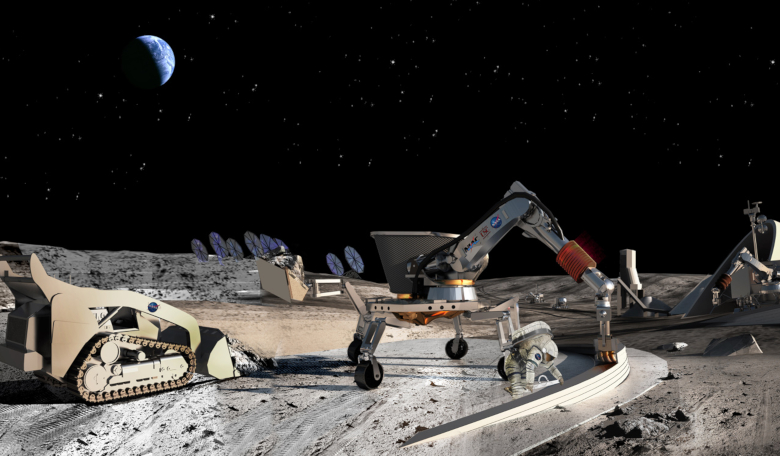As NASA gets ready to announce tomorrow (Thursday) who will deliver it's new water-hunting mobile robot, the Volatiles Investigating Polar Exploration Rover (VIPER), to the South Pole of the Moon, a new study could give the mission a head start as researchers at the University of Central Florida have created an Ice Favorability Index map so that potential prospectors can find where the best ice deposits for extracting likely exist.
Once considered a seemingly barren rock, ever since water ice was discovered within permanently shadowed regions at the poles of the Moon – up to 30 wt% ice on the surface is indicated at some locations – the idea of mining H2O has moved on from an idea slowly gaining traction to a full-on race by private companies and governmental agencies alike.
Aside from its obvious use to support a sustained human presence on the lunar surface by growing crops, providing drinkable fluids, generating oxygen for life support, etc. water ice can be processed into liquid oxygen/liquid hydrogen propellant and used as rocket fuel.
Manufacturing propellants in space eliminates the need to transport fuel as heavy payload from Earth, thus dramatically lowering the cost of space transportation beyond low Earth orbit; benefits that will also aid humanity’s quest in setting up colonies on other planets.
United Launch Alliance, who has already offered to buy liquid oxygen/liquid hydrogen propellant in cislunar space has said in a report that based on input from customers, “it was determined that there will be an early need for nearly 1,640 Metric Tons (MT) of propellant per year on the lunar surface.”
With so much demand for fuel alone, the private and public sector are scrambling to understand how much water is actually present on the Moon, and at what percentage is in the lunar regolith.
Coming to their aid is Kevin Cannon and Daniel Britt of the University of Central Florida who have put forward a geologic model for how ice deposits on the Moon might have formed and evolved.
“Despite being our closest neighbour, we still don’t know a lot about water on the moon, especially how much there is beneath the surface,” Cannon said in a media statement. “It’s important for us to consider the geologic processes that have gone on to better understand where we may find ice deposits and how to best get to them with the least amount of risk.”
After gathering data from satellite observations and from the first trip to the moon, the duo fed the information into computer simulations and produced a 3D map of the terrain showing all the areas that may contain ice.
According to Cannon, the duo constructed the map based on the way mining companies operate on Earth, as collecting physical samples, is currently out of the question.
“Mining companies conduct field mappings, take core samples from the potential site and try to understand the geological reasons behind the formation of the particular mineral they are looking for in an area of interest,” the researcher said. “In essence, they create a model for what a mining zone might look like before deciding to plunk down money to drill.”
Their research found that over time, asteroid impacts had a sizeable affect on the lunar ice as it lead to the burial and formation of deeper ice deposits.
“The simulation results showed ice concentrations should eventually become fairly homogeneous at meter to hectare scales due to impact gardening,” write the authors in their research paper published in the journal Icarus.
The study also predicts that the most favorable ice deposits for mining are likely tens of centimeters or deeper within the lunar regolith, even in locations where ice is currently stable at the very surface. High concentrations though are distributed randomly rather than clustered in Earth-like ore bodies.
With refined water ice expecting to generate billions of revenue annually – as much as $2.4 billion for 2,450 metric tons of processed lunar water, according to ULA – Cannon and Britt’s Ice Favourability index is likely to stir interest among budding moon-miners.
“The idea of mining the moon and asteroids isn’t science fiction anymore,” said UCF physics Professor and co-author Dan Britt. “There are teams around the world looking to find ways to make this happen and our work will help get us closer to making the idea a reality.”
If you've enjoyed reading this article, please consider subscribing to ROOM Space Journal to gain immediate and full access to the latest magazine feature articles and receive your own print and/or digital copies of the quarterly ROOM magazine delivered electronically or direct to your door.











